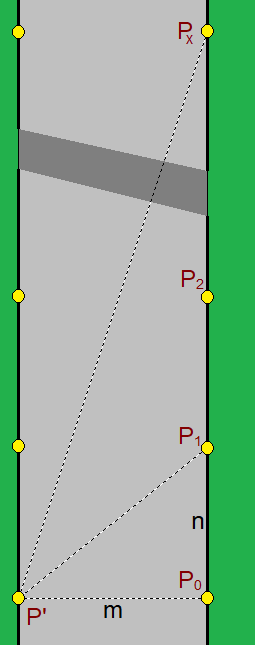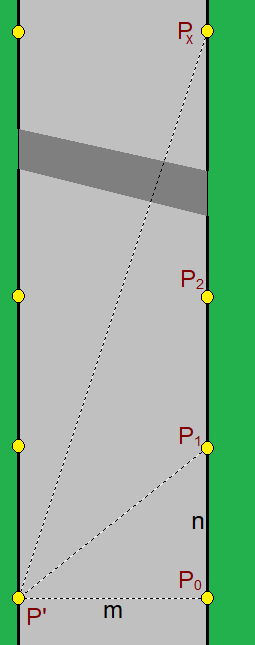Minimum Road Width
A road is meters wide( is an integer),there are lampposts at both sides of the road.
The lampposts are equally spaced(space meters, is an integer) on each side of the road.
I am standing on the east side of the road,under a lamppost .
There is another lamppost on the west side across from me ( ).
I walked north to the next lamppost ,and discovered that the distance is an integer.
I keep walking north to one of the lamppost ,and discovered that the distance is an integer,too.
What is the minimum width of the road(in meters)?
Note that I keep walking on the east side of the road.
Picture Source:From Jeremy Galvagni.

Try my set here
The answer is 12.
This section requires Javascript.
You are seeing this because something didn't load right. We suggest you, (a) try
refreshing the page, (b) enabling javascript if it is disabled on your browser and,
finally, (c)
loading the
non-javascript version of this page
. We're sorry about the hassle.

Both △ P ′ P 0 P 1 and △ P ′ P 0 P x are right triangles with integer sides, so we need two sets of Pythagorean triples with the same leg P 0 P ′ = m and the other leg ( P 0 P x ) that is a multiple of the first ( P 0 P 1 = n ).
The Pythagorean triples ( 5 , 1 2 , 1 3 ) and ( 1 2 , 3 5 , 3 7 ) meet the criteria with m = 1 2 , n = 5 , and P 0 P x = 5 ⋅ 7 = 3 5 .
This is also the smallest possible value for m by looking at a complete list of Pythagorean triples found here . Pythagorean triples with legs of 1 and 2 do not exist, and the Pythagorean triples with legs 3 , 4 , 5 , 6 , 7 , 1 0 , and 1 1 only appear once. A leg of 8 appears twice ( ( 6 , 8 , 1 0 ) and ( 8 , 1 5 , 1 7 ) ) but 1 5 is not a multiple of 6 , and a leg of 9 appears twice ( ( 9 , 1 2 , 1 5 ) and ( 9 , 4 0 , 4 1 ) ) but 4 0 is not a multiple of 1 2 . By elimination this means that the smallest possible value of m is m = 1 2 .